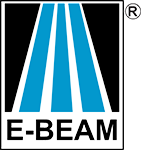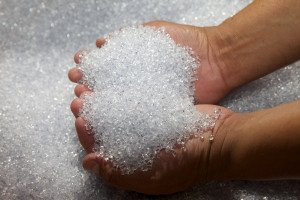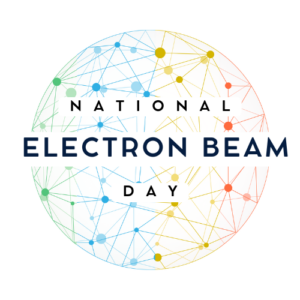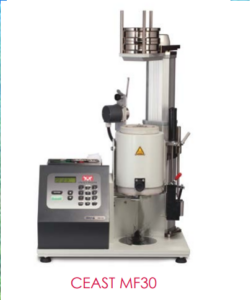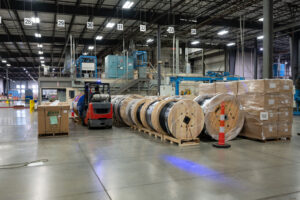- When you e-beam polyethylene resin pellets, won’t there be gels?
This is often one of the first questions asked in regards to e-beam processing in relation to changing the rheology of polymers. The concern is that with the e-beam irradiation, crosslinking is occurring and therefore hard gels are being formed. However, at low doses, before crosslinking is induced, branching occurs. Typically, sufficient branching can be achieved for most applications without approaching crosslinking and the formation of gels.
- What kind of testing does E-BEAM do to assist in evaluating rheological changes?
We have the capability to do three types of testing: 1) melt index, which is a good indicator of the effect of the irradiation on the molecular weight; 2) Goettfert Rheotens testing, which measures the practical melt strength of molten resin; 3) small scale extrusion capability, to confirm the absence of gels.
- What is the impact of branching on the properties of the polymers?
E-beam crosslinking of polymers is largely about achieving physical property improvements of a formed part, from higher temperature performance to improved chemical resistance. Modifying the rheology of a polymer via branching is largely about improving the processability of the resin while maintaining the mechanical performance of that polymer. A typical example of this is the branching of LLDPE: this will allow for much improved melt strength – to reduce neck-in, allow for down gauging, or expanding the possibilities for foam or thermoforming applications. There is little or no impact on physical properties.
- How big of a change is there to the melt index of the polymer?
Looking at various versions of polyethylene, the reduction in melt index could be as much as a factor of ten. More than that and it is possible crosslinking may start. Practically, this means you want to start with a higher melt index resin than you would typically use, and then with the e-beam process, we will reduce it– for example taking a 6 MI resin down to 1 MI. Give us a call about your application and we will help you find the right solution.
- Cost?
Any time there is a question about a process, there is the question of cost. For routine production of truckload quantities, the price could be as low as 11-13¢/lb. In the case of irradiating LLDPE to produce the melt strength of LDPE, the cost may be less than the price difference between LLDPE and LDPE, and you get the better thermal properties of LLDPE to boot! A quick discussion with E-BEAM Services will allow us to figure out your cost.
www.ebeamservices.com • Ohio (513) 933-0031 • New Jersey (609) 655-7460
